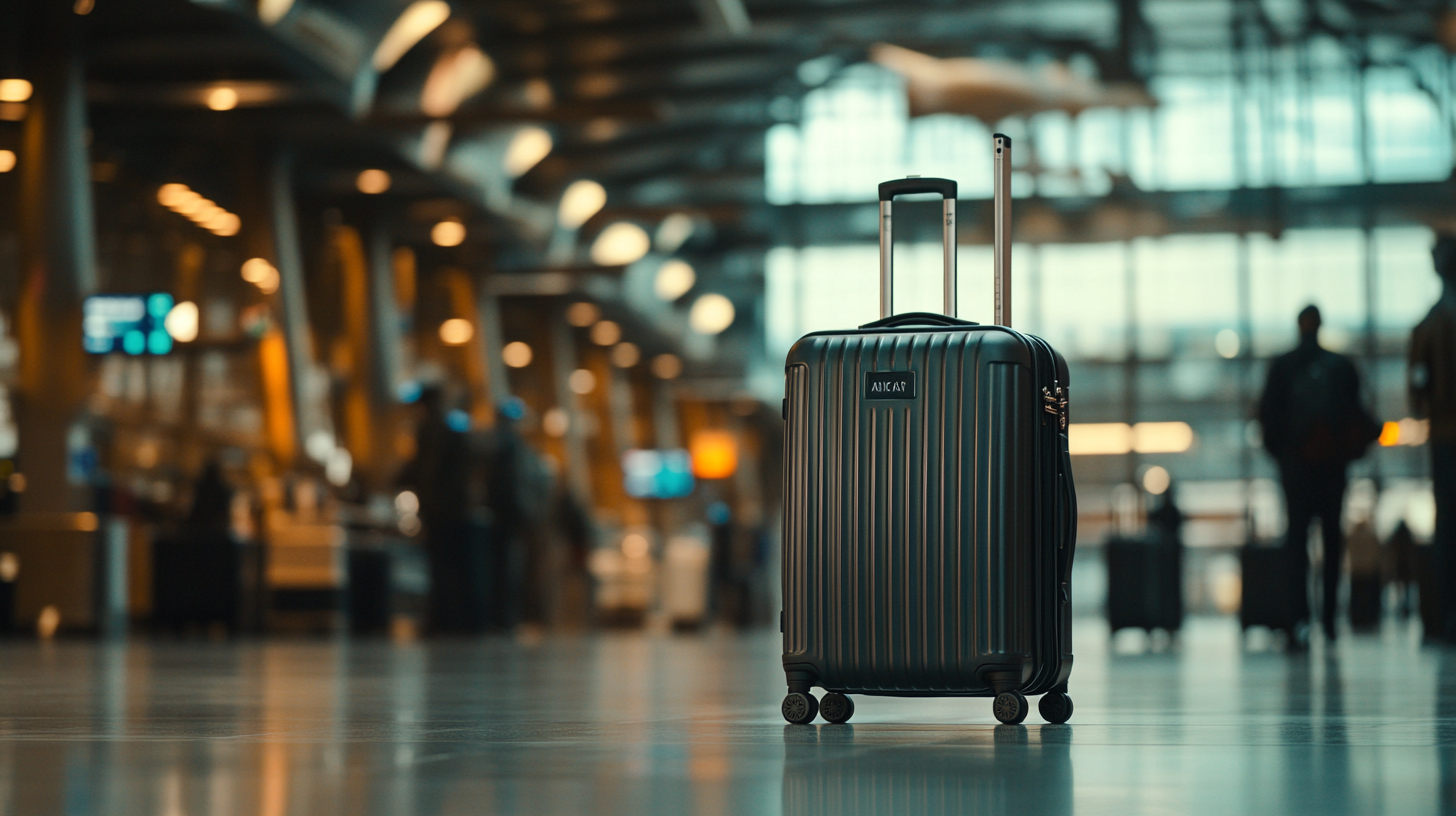The AirTag Lifespan Explained: How to Track Luggage Like a Pro
Traveling is like opening a treasure chest of new experiences and adventures, but let’s be honest—nothing puts a damper on your trip quite like the fear of your luggage taking a solo vacation. Picture this: you arrive at your dream destination, but your bags are nowhere to be found. Cue the anxiety and inconvenience! Thankfully, technology has our backs, making it easier than ever to keep track of our belongings. Enter Apple AirTags—those nifty little gadgets that let you monitor your luggage in real-time. This guide will walk you through the lifespan of AirTags and share some savvy strategies to help you track your luggage like a pro traveler.
Understanding Apple AirTags

Apple AirTags, introduced to the world in April 2021, are tiny tracking devices that fit right into the Apple ecosystem, helping you find misplaced items with ease. Each AirTag sends out a secure Bluetooth signal that nearby devices in the Find My network can pick up. This network, made up of millions of iPhones, iPads, and Macs globally, forms a powerful, anonymous, and encrypted system to help locate lost items. So, if you accidentally leave your bag at a coffee shop, any nearby Apple device can detect the AirTag and update its location on your Find My app. This clever system means you can track your belongings almost anywhere, giving you peace of mind like never before.
At the core of each AirTag is a replaceable CR2032 coin cell battery, known for its long life and reliability. With typical use, this battery can power your AirTag for up to a year, so you won’t be constantly swapping it out. The AirTag is sleek and sturdy, boasting an IP67 rating for water and dust resistance, meaning it can handle being submerged in up to one meter of water for 30 minutes. Setting up an AirTag is a breeze—just bring it close to your iPhone, and a setup animation pops up. In no time, your AirTag is ready to help you keep tabs on your valuables. These features make AirTags not just effective but super convenient for frequent flyers.
The Lifespan of an AirTag Battery

While Apple optimistically suggests that the AirTag battery should last about a year, actual battery life can vary based on several factors. Knowing these factors can help you get the most out of your AirTag:
- Usage Frequency: The more you use your AirTag, the more juice it uses. Activities like frequently activating the built-in speaker or using Precision Finding—a feature that gives you visual and haptic feedback to guide you to your nearby AirTag—can drain the battery faster. For example, if you’re constantly checking your luggage’s location on a trip, you might notice the battery running out sooner than expected.
- Environmental Conditions: Batteries don’t like extreme temperatures. Exposure to heat above 35°C (95°F) or cold below 0°C (32°F) can shorten battery life. If you’re traveling to places with harsh climates or leave your luggage in a hot car trunk, the AirTag’s battery might not perform at its best.
- Connectivity Factors: In crowded areas or places with lots of wireless traffic, your AirTag might communicate more frequently with nearby devices in the Find My network. Plus, if the Bluetooth connection between your AirTag and iPhone is shaky, the device might use extra power trying to reconnect, reducing battery life.
To keep your AirTag’s battery going strong throughout your travels:
- Use the Device Strategically: Limit unnecessary interactions with your AirTag. Unless you think your luggage is lost, avoid frequent location checks and use Precision Finding sparingly.
- Manage Notification Settings: Tweak your Find My app settings to cut down on unwanted alerts. Disabling certain notifications can save battery without sacrificing essential tracking features.
- Maintain Optimal Temperatures: Keep your AirTag away from extreme temperatures by storing your luggage in climate-controlled spaces when possible. Avoid leaving bags in direct sunlight or freezing areas for long periods.
- Regularly Check Battery Status: Keep an eye on your AirTag’s battery level through the Find My app. The app shows battery status indicators, so you can plan for replacements before long trips.
Setting Up Your AirTag for Luggage Tracking
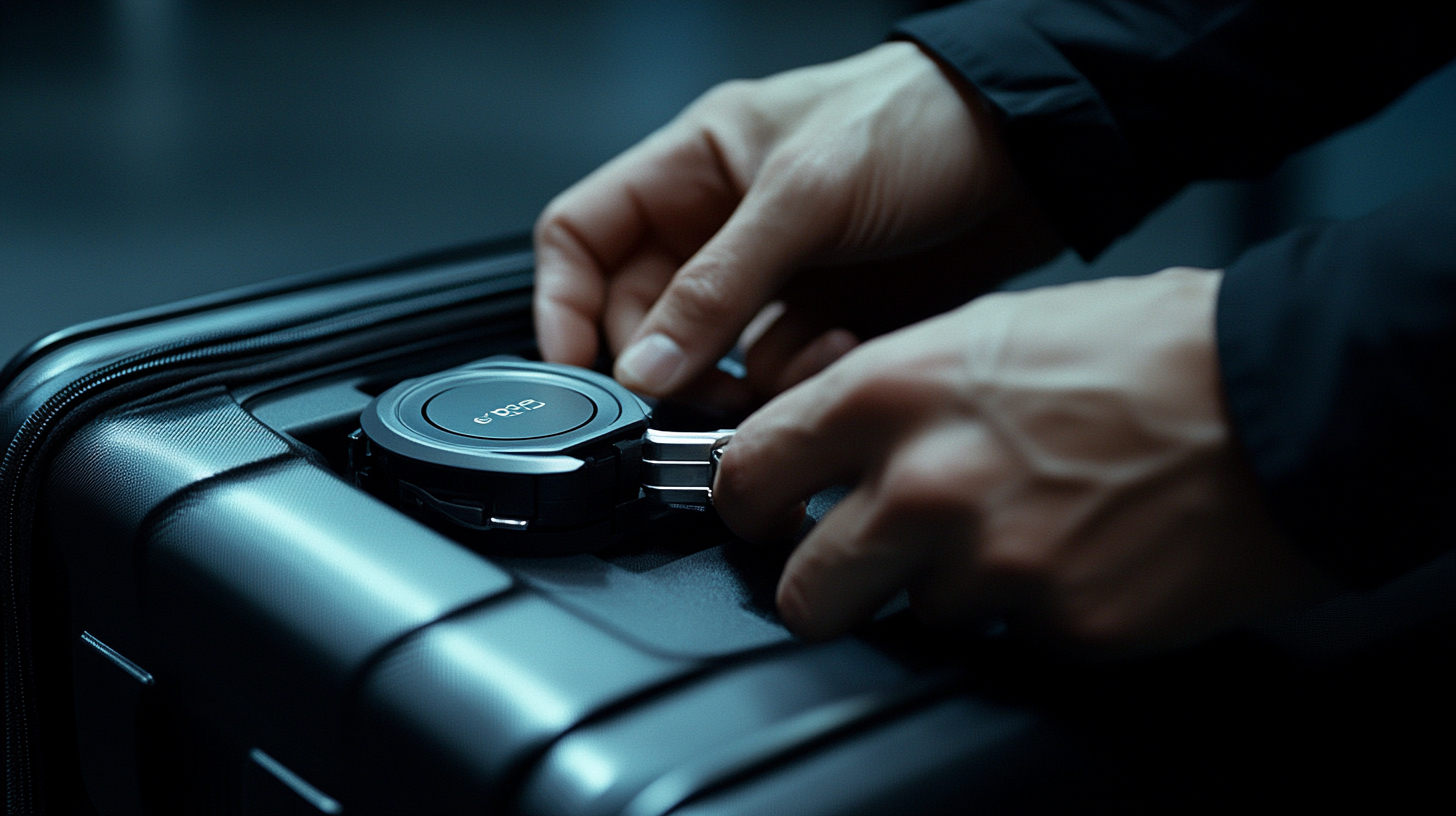
Getting AirTags into your travel routine is a cinch and can be done in a few easy steps. Here’s how to set them up for tracking your luggage:
- Pair with Your Device: Unbox your new AirTag and pull the plastic tab to activate the battery. Bring the AirTag close to your iPhone or iPad (make sure it’s running iOS or iPadOS 14.5 or later). A setup animation will pop up on your screen. Tap “Connect” and follow the pairing process. If the animation doesn’t show up, press and hold the top of the AirTag to your device to start the setup.
- Name Your AirTag: Give each AirTag a unique name. You can pick from default options like “Keys” or “Backpack,” or create a custom name like “Checked Bag” or “Blue Suitcase.” Adding an emoji can also help you visually distinguish your items in the Find My app.
- Enable Location Services: Make sure Location Services are turned on for your iPhone or iPad. Go to Settings > Privacy > Location Services and toggle the switch on. Scroll down to Find My and set it to “While Using the App” or “Always” to allow proper tracking of your AirTag.
- Place Inside Luggage: Securely place the AirTag inside your luggage. It’s best to hide it in an interior pocket or a discreet compartment to prevent tampering or theft. Alternatively, you can use an AirTag accessory like a key ring or luggage tag to attach it externally, but be cautious of the increased risk of it being removed.
- Connect to Airport Wi-Fi: While at the airport, connect your iPhone or iPad to the airport’s Wi-Fi network. This connection boosts the accuracy and speed of location updates, especially in areas with limited cellular coverage. Remember to briefly turn off airplane mode after landing to update your luggage’s location.
Best Practices for Tracking Luggage Like a Pro

To get the most out of your AirTags during travel, consider these best practices that seasoned travelers swear by:
Use One AirTag Per Bag
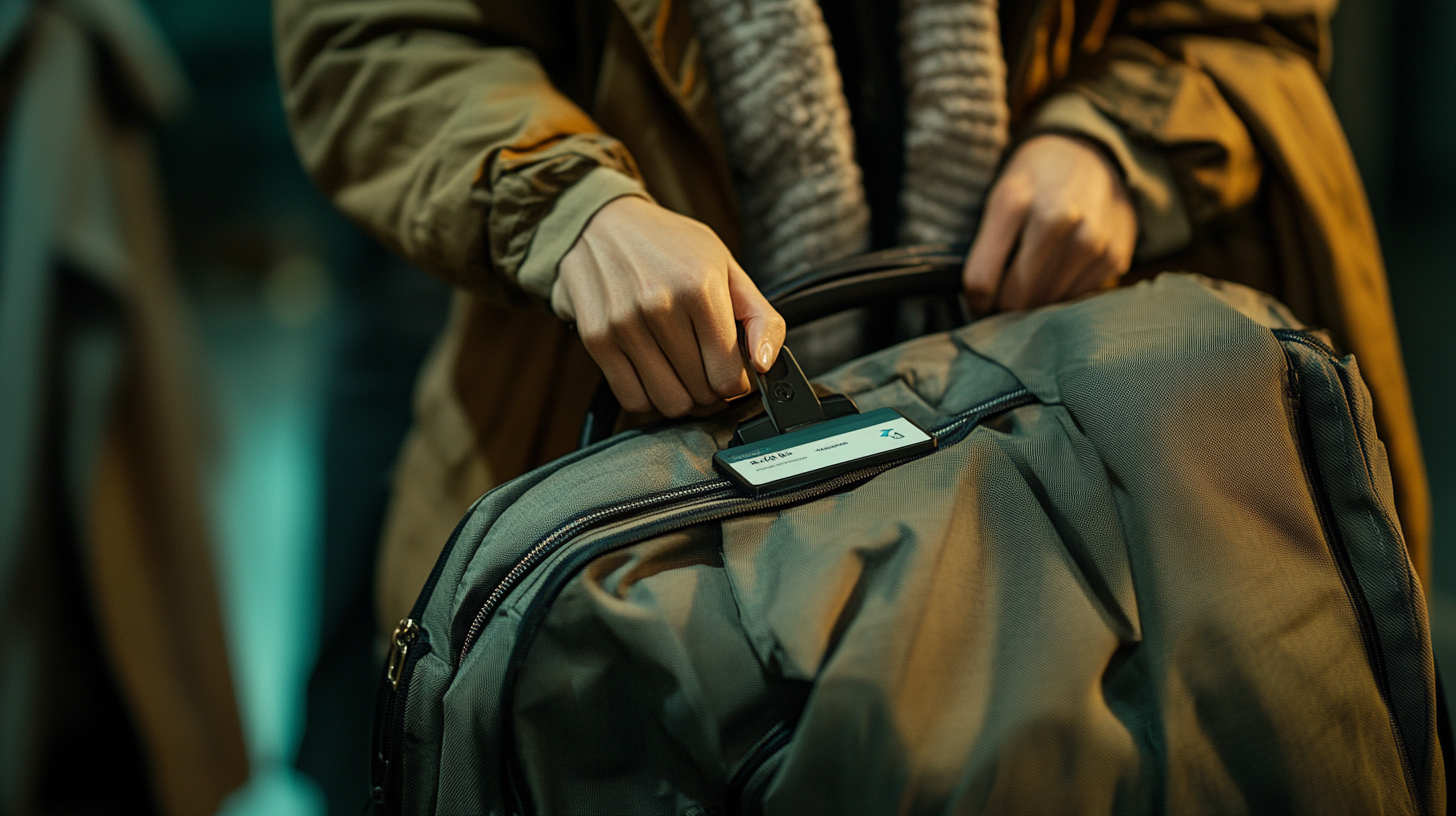
For full coverage, assign an individual AirTag to each piece of luggage. Whether you’re traveling with a single carry-on or multiple checked bags, having a dedicated AirTag for each ensures you can monitor every item independently. For instance, if your suitcase and duffel bag are loaded onto different carts at the airport, you’ll receive distinct location updates for each, allowing you to pinpoint exactly where each piece is at any given time.
Secure Placement

For optimal security, hide the AirTag inside your luggage rather than attaching it to the outside. Tuck it into an inner pocket or conceal it within a shoe or a garment. This strategy reduces the likelihood of the AirTag being discovered and removed by individuals with malicious intent. For instance, if someone were to rummage through your bag, they’re less likely to find an AirTag hidden deep within a zipped compartment compared to one clipped onto a zipper pull.
Monitor Battery Life
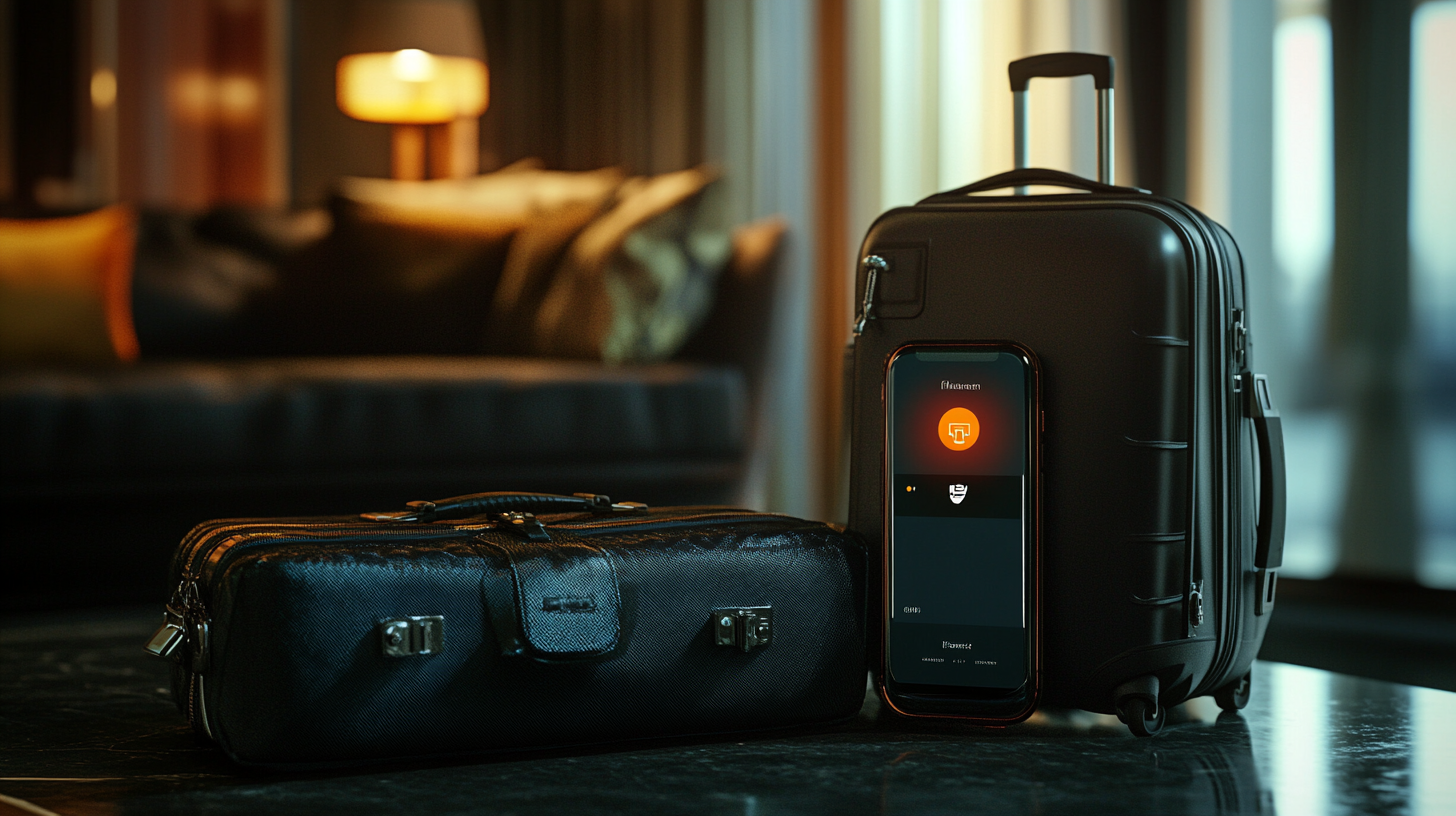
To avoid unexpected interruptions in tracking, make it a habit to monitor your AirTag’s battery life. You can check the battery status in the Find My app under the “Items” tab. When the battery level becomes low, a notification will alert you. It’s wise to replace the battery before embarking on long trips. Consider carrying spare CR2032 batteries if you travel frequently, so you’re prepared to replace them as needed.
For a detailed guide on how to replace your AirTag battery efficiently, refer to Step-by-Step AirTag Battery Replacement Instructions. Following proper procedures ensures your device remains functional and avoids potential damage.
Share Location Details with Airline Staff

In the unfortunate event that your luggage goes missing, the precise location data from your AirTag can be invaluable. Approach the airline’s lost luggage desk and inform the staff that you have a tracking device inside your bag. Show them the current location of your luggage on the Find My app. While airline policies may vary, providing specific coordinates can assist the staff in locating your bag more quickly, especially if it was mistakenly loaded onto the wrong flight or left behind at the departure airport.
For insights on airline policies regarding tracking devices, consider reading Understanding Airline Policies on Luggage Tracking Devices. Being informed can help you navigate conversations with airline personnel effectively.
Avoid Extreme Temperatures

Extreme temperatures can negatively impact the performance of your AirTag’s battery. When possible, avoid leaving your luggage in environments where temperatures can soar or plummet, such as in the trunk of a car on a hot day or outdoors in freezing conditions. If you’re traveling to a destination with a harsh climate, consider insulating your AirTag by placing it within layers of clothing or inside thermal bags to help maintain a stable temperature.
Benefits of Using AirTags for Luggage Tracking
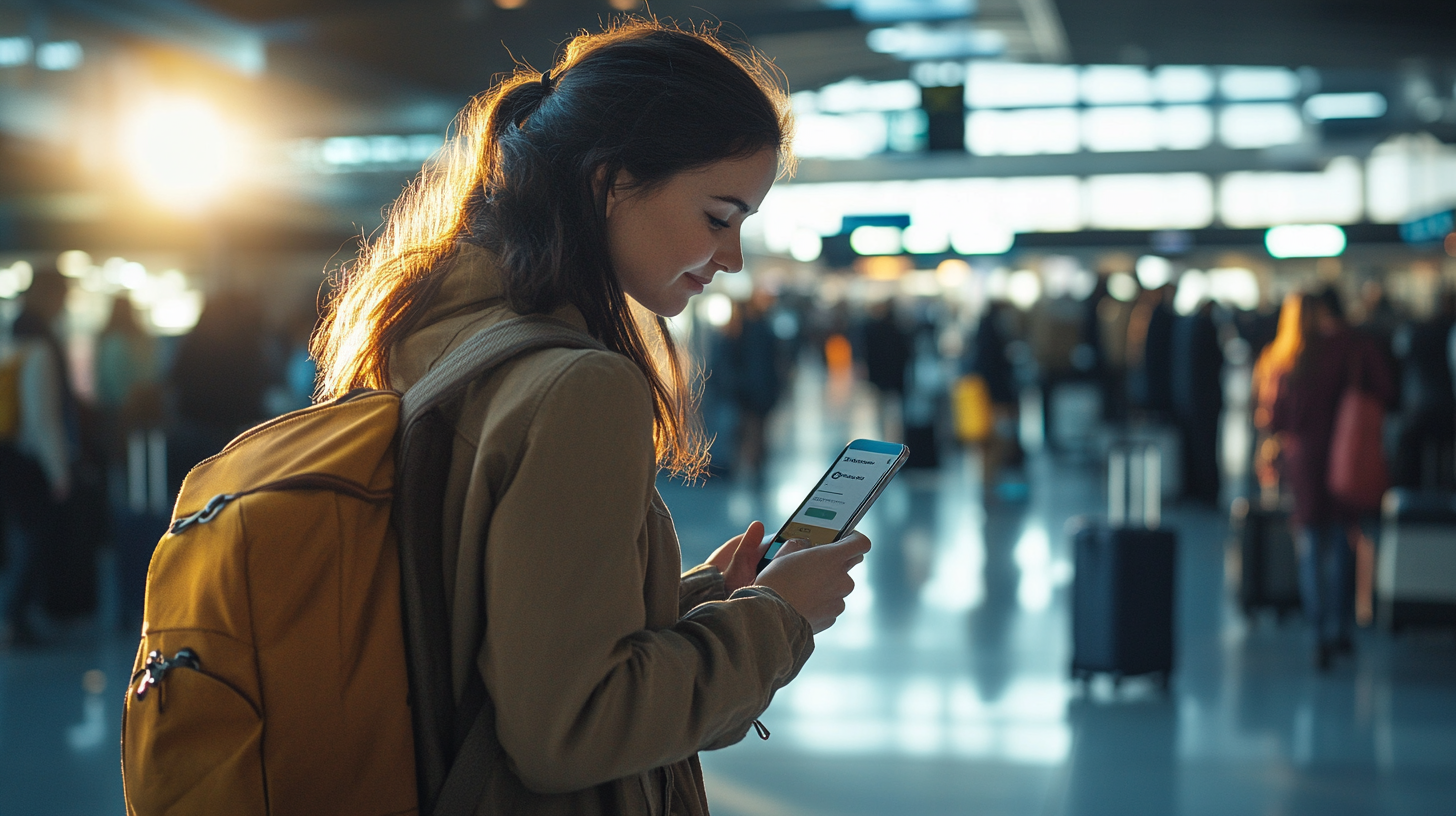
Leveraging AirTags for luggage tracking transforms your travel experience in several meaningful ways:
- Real-Time Tracking: With AirTags, you can monitor your luggage’s location at any point during your journey. For example, while waiting at baggage claim, you can check if your bag has arrived at the airport. This real-time information alleviates uncertainty and allows you to take prompt action if something is amiss.
- Time Efficiency: Instead of spending precious vacation time dealing with lost luggage, AirTags help you quickly pinpoint your belongings. If your bag is left behind or sent to the wrong destination, you can identify its location immediately and coordinate with the airline for retrieval, potentially saving days of waiting.
- Improved Communication: Providing airline staff with specific location data enhances the effectiveness of their search efforts. By showing them the precise whereabouts of your luggage, you can facilitate a faster and more efficient recovery process.
- Enhanced Travel Confidence: Knowing that you have a reliable method to track your luggage reduces travel-related stress. This peace of mind allows you to focus on enjoying your trip rather than worrying about the security of your belongings.
Considerations and Limitations

While AirTags offer significant benefits, it’s essential to understand their limitations and consider them when planning your luggage tracking strategy:
Device Compatibility
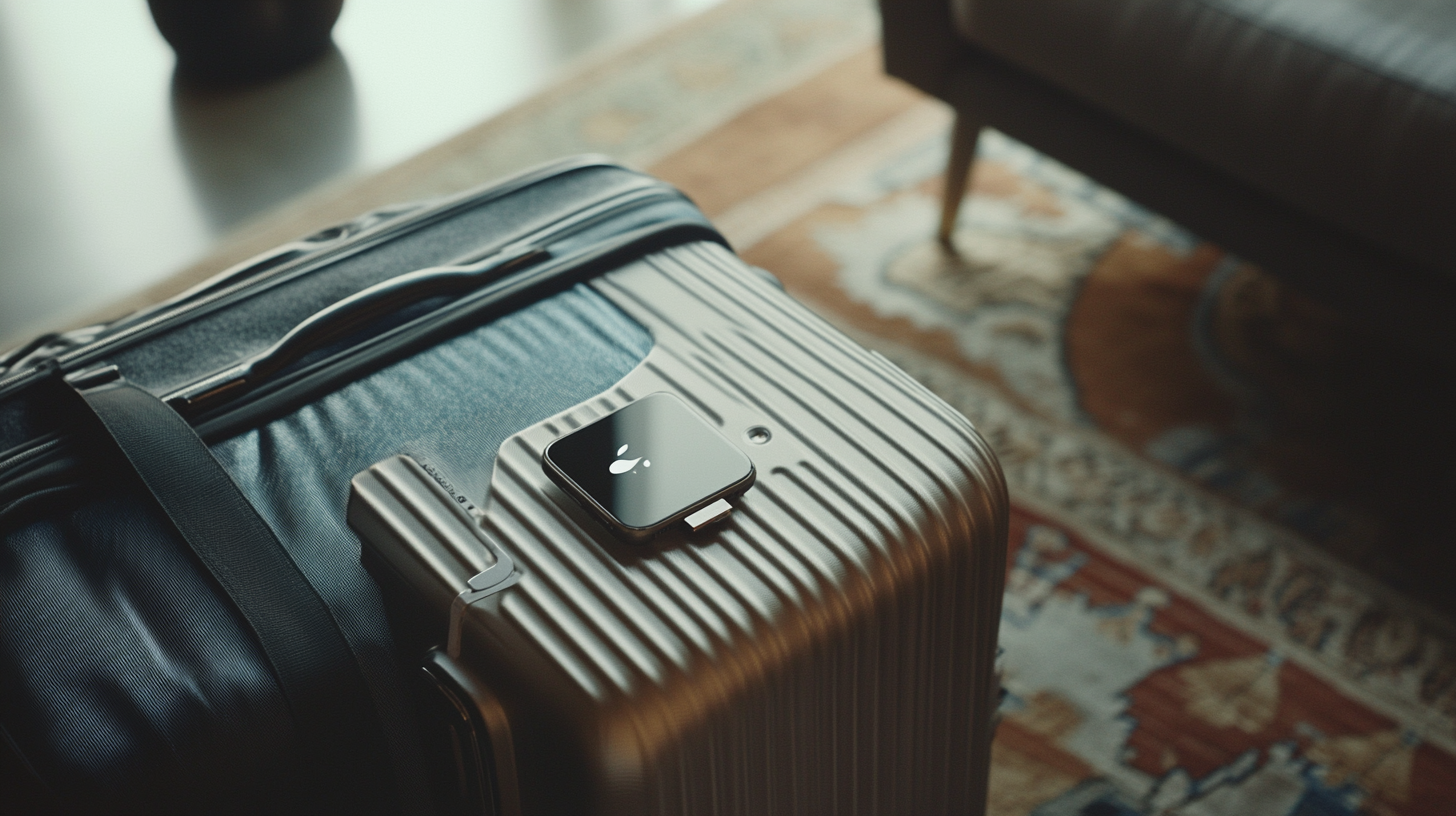
AirTags are designed to work seamlessly with Apple devices. To set up and use AirTags effectively, you’ll need an iPhone or iPad running iOS or iPadOS 14.5 or later. Android users cannot set up AirTags, though they can interact with lost AirTags to help reunite them with their owners. If you’re not an Apple user, consider alternative products like Tile or Samsung’s SmartTag, which provide similar functionality and are compatible with a wider range of devices.
For a comparison of different tracking devices across platforms, see Comprehensive Comparison of Luggage Tracking Devices for 2023. This resource can help you choose a tracker that best fits your needs and device compatibility.
Privacy and Security Features
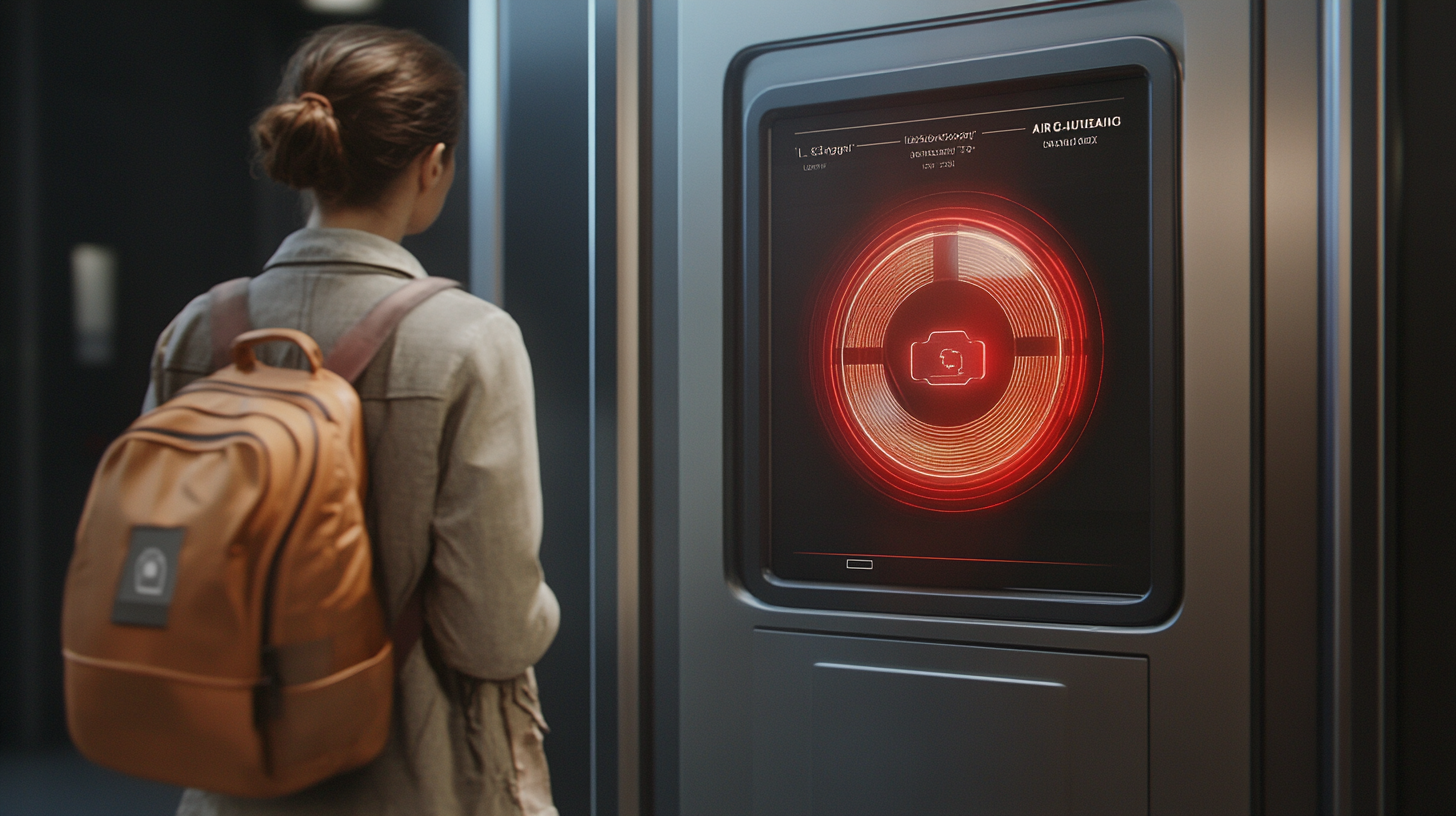
Apple has implemented robust privacy and security features to prevent AirTags from being used maliciously. If an AirTag is separated from its owner and travels with someone else, their iPhone will detect the AirTag and alert them with a notification like “AirTag Found Moving With You.” Additionally, if the individual does not have an iPhone, the AirTag will emit a sound after a period of time when moved to alert those nearby. While these features are crucial for preventing unauthorized tracking, they may inadvertently reveal the presence of your AirTag to others, potentially leading to its discovery and removal from your luggage. Be aware of this possibility and consider it when relying on AirTags for long-distance luggage tracking.
To learn more about how AirTag privacy features work, read Understanding AirTag Privacy and Security Measures. Being informed helps balance your need for tracking with respect for personal privacy.
Dynamic Object Tracking Limitations

AirTags rely on nearby Apple devices in the Find My network to update their location. In high-traffic areas like airports, luggage moves rapidly through conveyor systems and handling processes. Since the AirTag’s location is updated when it comes near another Apple device, there may be delays or gaps in tracking moving items. This means that while you may receive periodic updates, you might not get a continuous, real-time location stream for your luggage as it travels through the airport’s systems. AirTags are most effective once the luggage reaches a more stationary state, such as being in a holding area or arriving at a destination airport.
Maintaining Your AirTag
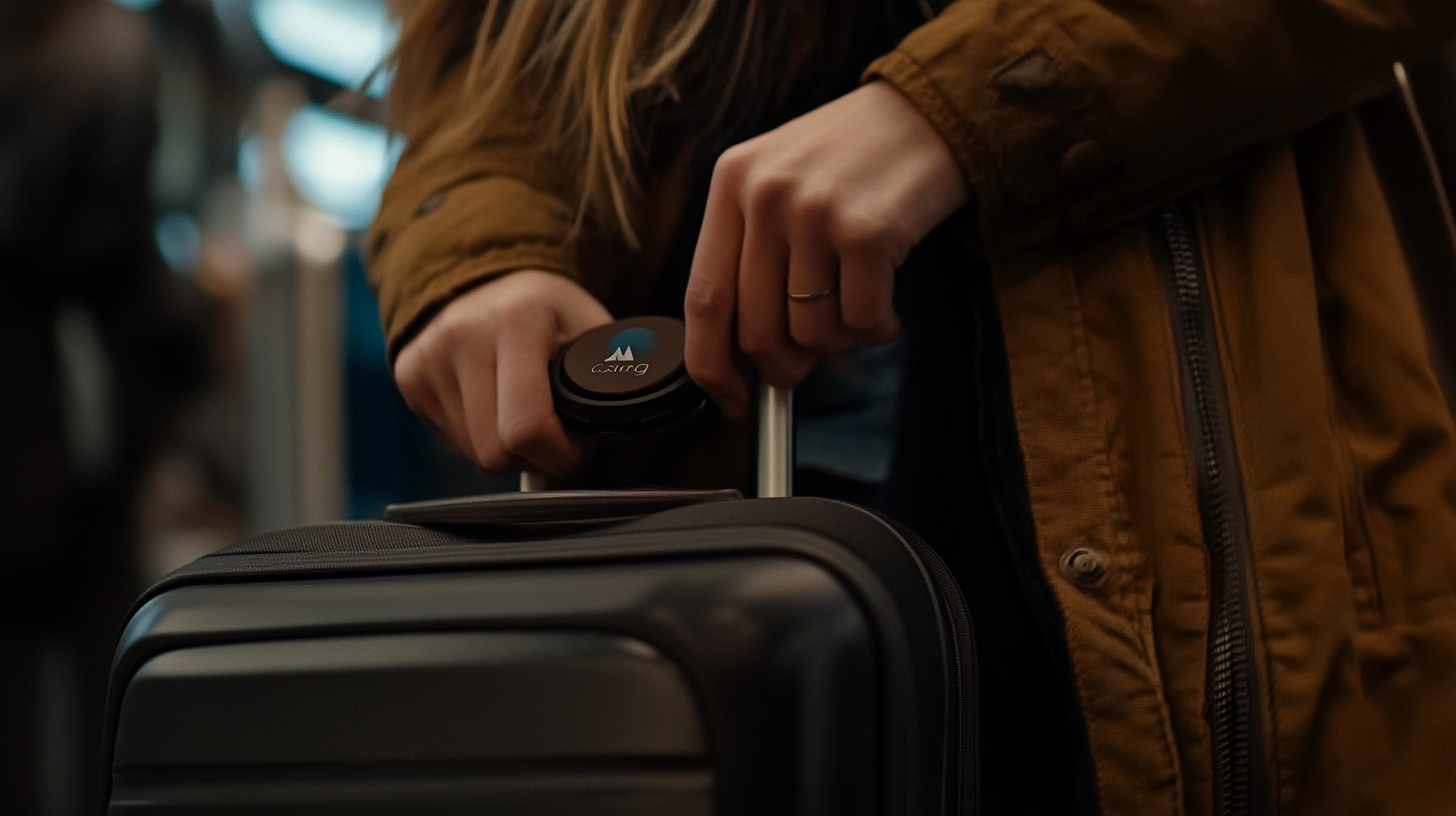
To ensure your AirTag remains functional and efficient throughout its lifespan, regular maintenance is key. Here’s how to keep your device performing optimally:
- Replace Batteries Annually: Since the CR2032 battery typically lasts about a year under normal usage, it’s wise to set a calendar reminder to replace it annually. Even if the battery hasn’t died, preemptive replacement ensures uninterrupted service. Remember to check the battery status in the Find My app periodically.
- Update Your Devices: Keep your iPhone or iPad updated to the latest version of iOS or iPadOS. Software updates often include important improvements and bug fixes that enhance the performance and security of the Find My network. An up-to-date device ensures seamless communication with your AirTag.
- Responsible Battery Disposal: CR2032 batteries contain materials that can be harmful to the environment. When replacing your AirTag’s battery, dispose of the old one properly by taking it to a battery recycling facility or following your local regulations for battery disposal. This small act contributes to environmental conservation.
For detailed instructions on AirTag maintenance and care, see Ultimate Guide to AirTag Maintenance and Care. Following best practices helps extend the life of your device.
Alternative Tracking Options

If you’re not an Apple user or you’re seeking options that better suit your specific needs, consider these alternative smart trackers:
- Samsung SmartTag and SmartTag+: Tailored for Samsung Galaxy smartphones, these trackers integrate with the SmartThings Find network. The SmartTag+ model includes Ultra-Wideband (UWB) technology for more precise locating. Much like AirTags, they offer features such as ringing the tracker and viewing its last known location on a map. These devices are ideal for users fully embedded in the Samsung ecosystem.
- Tile Trackers: Tile offers a versatile range of trackers, including the Tile Mate, Tile Pro, Tile Slim, and Tile Sticker, each designed for different use cases. Compatible with both iOS and Android devices, Tile trackers utilize Bluetooth technology in conjunction with the Tile app. They benefit from a large user base, which helps in locating lost items through the community find feature. Tile devices also offer user-replaceable batteries in some models and have varying ranges and designs to suit your preferences.
For more information on how these alternatives compare to AirTags, refer to Comparative Analysis of AirTags, SmartTags, and Tile Trackers. This can help you make an informed decision based on compatibility and features.
Final Thoughts

In an age where technology simplifies many aspects of life, leveraging devices like Apple AirTags for luggage tracking can transform your travel experience. By understanding how to effectively set up and maintain your AirTags, you not only enhance the security of your belongings but also gain peace of mind. Whether you’re a frequent flyer navigating international airports or embarking on a once-in-a-lifetime vacation, the ability to monitor your luggage provides a layer of confidence that can make your journey more enjoyable.
Follow us back to milesBUZZ for more travel tips and insights. Wishing you safe and happy travels!

